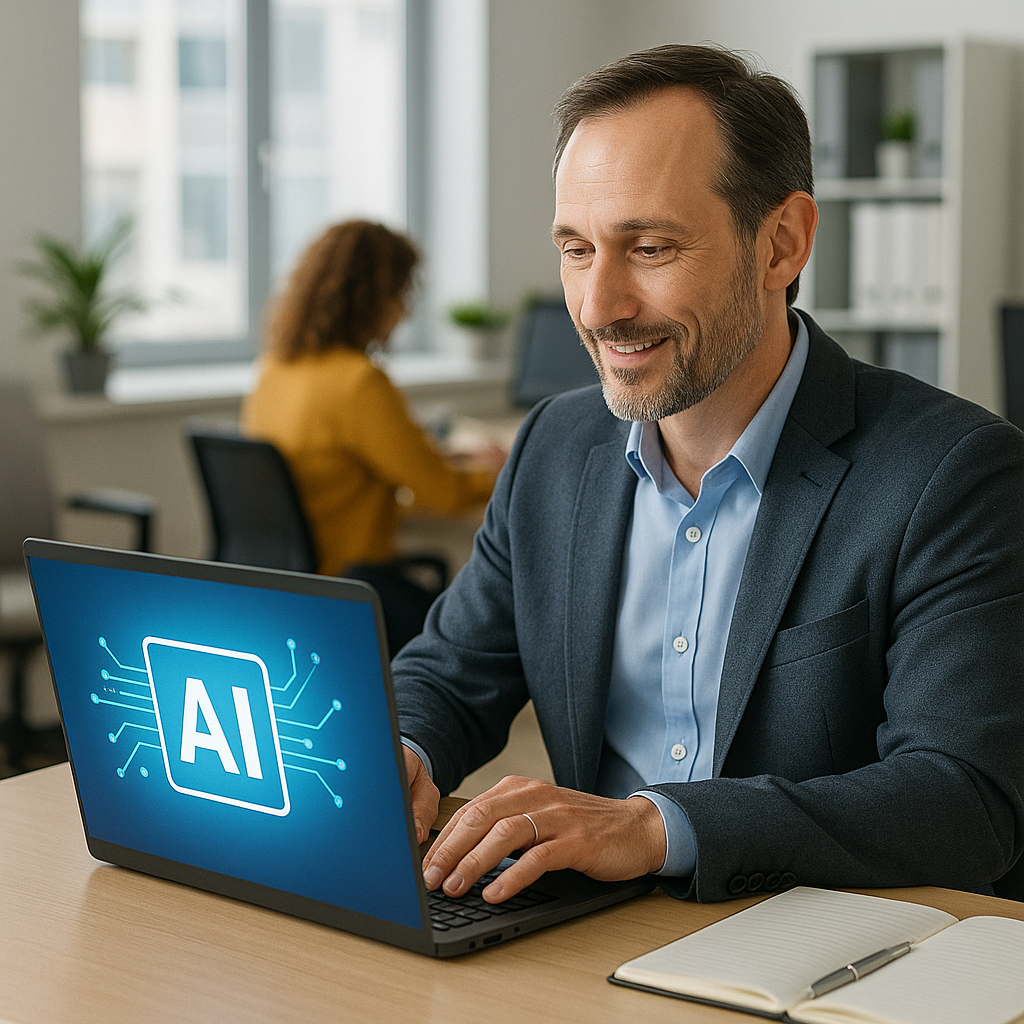Introduction: The Rise of the AI-Powered Workplace
Artificial Intelligence (AI) is no longer confined to research labs or futuristic predictions—it’s at your desk, in your meetings, and even in your inbox. From virtual assistants that schedule calls to algorithms that predict market trends, AI is transforming how professionals work and collaborate.
In a world where speed, precision, and adaptability define success, AI is becoming the ultimate partner—streamlining workflow, automating routine tasks, and empowering professionals to focus on creativity, leadership, and innovation.
1. AI as Your Digital Co-Worker
AI is reshaping job roles, not by replacing humans, but by complementing them. It takes over repetitive or time-consuming tasks so professionals can concentrate on strategy and innovation.
Examples:
- ChatGPT, Jasper AI, and GrammarlyGO assist with writing, editing, and communication.
- Microsoft Copilot integrates AI directly into Excel, Word, and Teams to automate documentation and analysis.
How It Helps:
- Saves hours of manual work through automation.
- Reduces human error in data entry, reporting, and content creation.
- Acts as a personal assistant for emails, notes, and task prioritization.
2. Smarter Decision-Making Through AI Insights
AI excels at processing massive data sets and turning them into actionable insights. It helps leaders and employees make smarter, faster, and more informed decisions.
Examples:
- Tableau AI and Power BI use AI-driven analytics to reveal patterns in business performance.
- Marketing teams use HubSpot AI or Google Analytics 4 to understand customer behavior and forecast trends.
How It Helps:
- Predicts market changes and helps businesses stay ahead of competitors.
- Provides real-time dashboards for better performance tracking.
- Supports data-driven decision-making across all levels of management.
3. AI for Enhanced Collaboration and Communication
In hybrid and remote workplaces, AI fosters seamless communication and collaboration between teams.
Examples:
- Zoom AI Companion summarizes meetings, creates action points, and even translates discussions in real time.
- Slack AI suggests relevant threads, automates reminders, and enhances project tracking.
How It Helps:
- Keeps teams aligned without additional effort.
- Summarizes discussions so employees can catch up quickly.
- Removes language barriers for global teams.
4. AI for Employee Growth and Development
AI is also revolutionizing corporate learning and career development. Personalized learning platforms powered by AI help employees acquire relevant skills and grow within their careers.
Examples:
- LinkedIn Learning AI recommends skill-based courses tailored to an individual’s role and interests.
- Coursera and Udemy Business use AI to create adaptive learning paths for employees.
How It Helps:
- Encourages continuous learning and upskilling.
- Detects skill gaps and recommends specific courses.
- Builds a culture of lifelong learning in the workplace.
5. AI for Creativity and Innovation
AI has become a creative ally in industries ranging from marketing and design to software development.
Examples:
- Canva Magic Studio and Adobe Firefly allow professionals to design creative assets faster with AI assistance.
- Developers use GitHub Copilot to write code, debug, and learn new programming languages efficiently.
How It Helps:
- Speeds up the creative process by providing instant ideas and prototypes.
- Reduces burnout by simplifying repetitive creative work.
- Encourages experimentation and innovation through automation.
6. The Ethical and Emotional Side of AI at Work
While AI increases productivity, it also raises questions about data privacy, job displacement, and human connection. Organizations must strike a balance between automation and empathy to create sustainable, human-centered workplaces.
Key Challenges:
- Over-reliance on AI may reduce human judgment and critical thinking.
- Ethical issues arise when AI makes hiring or promotion decisions.
- Maintaining emotional intelligence in AI-led environments is crucial for employee well-being.
How to Use AI Responsibly:
- Companies should ensure transparency in AI decisions.
- Employees must be trained to use AI tools ethically.
- Human oversight should always complement automation.
7. The Future of Work: Humans and AI Together
AI is not replacing humans—it’s redefining what it means to work. The future workplace will depend on collaboration between human creativity and machine intelligence. Those who learn to work alongside AI, leveraging it for efficiency, innovation, and insight, will thrive in the years ahead.
What to Expect in the Future:
- AI-powered project managers and business consultants.
- Predictive career planning tools for employees.
- Smarter work environments that anticipate employee needs.
Conclusion: Work Smarter, Not Harder
AI is transforming the modern work life from the ground up—making jobs more efficient, insightful, and rewarding. By embracing AI, professionals can offload mundane tasks, focus on creativity, and unlock new levels of performance.
The message is clear: AI isn’t coming for your job—it’s here to enhance your potential. The future of work isn’t about competing with AI; it’s about mastering the art of working with

